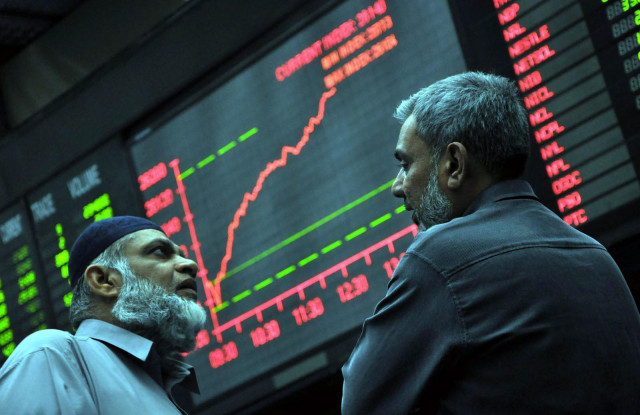The state of the economy
Pakistan’s policies are such that it is much easier for companies to exist in informal sector than in formal one

In Pakistan’s case, widening the tax net, finding new export markets and products, and easing the red tape that discourages a business’ entry in the formal sector are crucial specifics. PHOTO: FILE
We also recently saw the World Bank applauding the government’s efforts, but it added that many of the economic gains were due to external factors. As a net oil importer, falling oil prices have aided our balance of payments’ position, taking down the cost of producing power and giving room to the government to cut back on subsidies. These are all crucial factors for a government plagued with the ills of circular debt and a power crisis. The IMF, too, has now stated that Pakistan had repaired its economy and was ready for fiscal independence. But in another report, the Mission Chief for Pakistan also said that economic growth was still insufficient to cater to job demand and exports far too low for the size of the economy.
There is no doubt that Pakistan’s situation — both in terms of foreign currency reserves, economic growth and balance of payments’ position — has improved in the last three years. Some of it has come from well-directed measures, while much of the progress has come from remittances and falling oil prices. Increasing tax rates on the sale of fuel has also helped mitigate the shortfall in revenue that falling crude oil prices tend to cause in oil-importing countries. All these recent statements from international financial institutions tend to look at the picture in a broad manner with their tone being one that gives a general overview of the economic situation, ignoring the specific issues Pakistan continues to face. The short- and medium-term issues may have been dealt with, but structural issues — in governance and policy — continue to be a problem. The bottlenecks in doing business and poor infrastructure continue to be ignored. Punjab is the only province that attracts new investment consistently while other provinces wait for miracles.
One feels that the progress that has been made is not sustainable if a turnaround isn’t achieved by making strategically long-term moves. In Pakistan’s case, widening the tax net, finding new export markets and products, and easing the red tape that discourages a business’ entry in the formal sector are crucial specifics. Pakistan’s policies are such that it is much easier for companies to exist in the informal sector than in the formal one and this is a huge issue. When it comes to taxes, a tedious process that leaves many far more confused than they were before they decided to pay them is a problem in increasing collection. In response, the government’s strategy has been to increase taxes for those already in the tax net, rather than widening the net. Loss-making state-owned entities continue to ride on bailouts and powerful lobbies continue to get undue favours. The agriculture sector is depressed and primitive methods of farming have not helped either. The government’s response to counter these issues is to rely on bailouts, which is good for securing votes, but not enough to secure a sustainable future for the economy. Pakistan has been helped by the IMF’s bailout programme that will end in September. Without that, the country’s economic situation might just become slightly more precarious. Oil prices have already increased around 55 per cent this year and long-term policies that aid growth are a need of the hour.
Published in The Express Tribune, May 1st, 2016.
Like Opinion & Editorial on Facebook, follow @ETOpEd on Twitter to receive all updates on all our daily pieces.














COMMENTS
Comments are moderated and generally will be posted if they are on-topic and not abusive.
For more information, please see our Comments FAQ